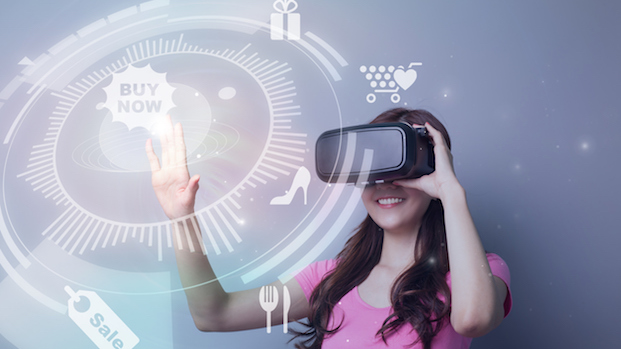February 2019
Investments in hardware and software as drivers

The fact that AR applications make sense for marketing has already become apparent in recent years. But until now, programming and presentation has been cumbersome and unsatisfactory, as platforms and technologies have been lacking. That has now changed as Apple and Google now offer an AR platform for developers. Snapchat and Facebook are also positioning themselves as AR channels. Last but not least, smartphone cameras, the gates to the AR world, are also getting better and better. The fact that the way has now been paved for good AR marketing applications is also being proven in numerous use cases.
AR in e-commerce, outdoor advertising and branding
Especially when it comes to e-commerce, the AR world plays into the hands of marketers. Products that are difficult to display online, such as furniture or home accessories, can simply be conjured into the homes of potential customers by AR applications. IKEA's Place app, for example, allows you to try out pieces of furniture right in your own home. Using Google's room recording app Tango, potential buyers can immediately calculate whether a sofa will fit in their living room. Or the company Modiface, which can be used to conveniently test cosmetic products at home via the AR application on a smartphone. The cosmetics group L'Oréal bought the company for good reason. There are also some very nice AR use cases in the area of outdoor advertising. With its Magic Mirror campaign, Tempo took visitors of the Alexa Shopping Center in Berlin into digital worlds of experience. Those who looked at themselves in the Magic Mirror saw a waterfall, a water-spraying whale or a yeti jumping in puddles. This is a classic example, in which the presentation, the AR experience, seduces instead of soberly focusing on product impressions. Beck's also showed a branding campaign with its Green Box, in which customers were able to scan green boxes, which were placed close to sights in different cities, with their smartphones and thus view virtual, artistic extensions of the sights. Nike also relies on AR marketing. The sporting goods giant uses this feature to let its fans catch their first glimpses of new sneaker models, for example.
AR in social media
Social media platforms like Snapchat or Facebook are also increasingly relying on AR features. For example, users can decorate their snaps with special AR applications, so-called lenses, with film characters or brand mascots. The streaming service Netflix promoted its "Stranger Things" series with an eerie AR environment that invited the user to interact. However, the fast food chain Taco Bell probably achieved the record in reach and excellent interaction values with its sponsored lens on Snapchat reaching 224 million hits in just a single day and an average interaction time of 24 seconds. The idea was as simple as it was ingenious: users could make and send selfies by turning their own likeness into a giant taco. Snapchat is generally regarded as a pioneer in AR marketing. Facebook is trying to follow suit and offering advertisers an AR feature in Messenger. Interested users can then view AR effects via their camera in a chat with the brand.
Rosy prospects
According to Research and Markets, the combined market size of augmented and virtual reality is expected to reach 55 billion US dollars by 2021. And the IT company newgen apps expects one billion AR users in 2022—a solid, if not explosive, growth of this technology. Nonetheless, marketers should keep a close eye on the opportunities offered by the relatively low-cost advertising opportunities provided by AR applications such as Snapchat's Lenses.
Tags
- Digital Marketing
- Digital Trends